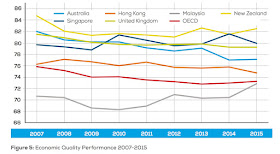I always believe that when you are new at something, you are entitled to ask the most basic questions. That was exactly what I did when I was the MIA President. I asked about the value of excellence awards such as the National Annual Corporate Report Awards (NACRA) and the National Awards for Management Accounting (NAFMA) where MIA was co-organisers for both.
As for NACRA, listed companies are not required to apply. All their annual reports would be screened by dedicated accountants until winners are determined. Not a bad deal for those companies, the accountancy profession takes all the trouble. Only when they are shortlisted, they have to pay for attending a dinner where the winners would be announced.
NAFMA, then, differed slightly where companies are required to apply and disclose their management accounting practices. The panel of judges would visit them to verify and understand more their practices. One organisation kept on winning for the first few years until they were gently encouraged to give way for others.
Of course I got strong responses from the other partners which were very clear of their positions in defending those awards. Among the arguments were the awards encourage companies to be more transparent in corporate reporting and would continue to enhance their management reporting practices because of the awards.
I am not denying that these kind of awards could generate benefits. There could be real progress where the winners become better companies. However, does this rule apply to all companies? How many award winners had troubles later and are no longer listed? Someone should look into this aspect.
So, does reporting excellence correlate to organisational effectiveness? I am not yet convinced. My scepticism applies to even organisations which managed to implement integrated reporting.
If organisations have specific mandates and key information about the mandate are missing, what is the point of telling lengthy stories about "value creation" when certain fundamental information are not there? With the present printing capabilities, readers might be fascinated with beautiful graphics and could miss the "missing links or points".
Doing the same thing over and over again without challenging their meanings and ascertaining outcomes is not my cup of tea. Isn't this the cause of why many great companies failed? They got very nervous when their flagship products were criticised. Until the market really shifted and competitors have secured huge chunks of their markets with superior products or solutions, then only the reacted, albeit too late.
Well, I am still wondering about the nexus between excellence in reporting and organisational effectiveness. I could be alone. What the heck!









